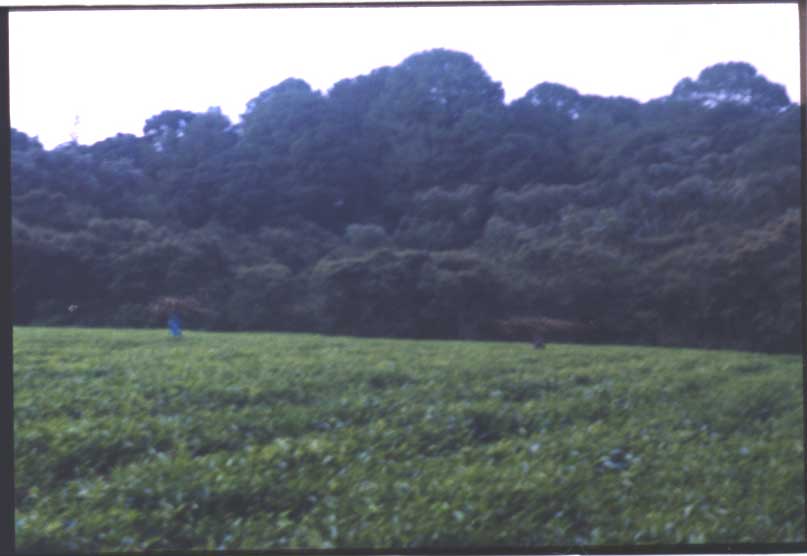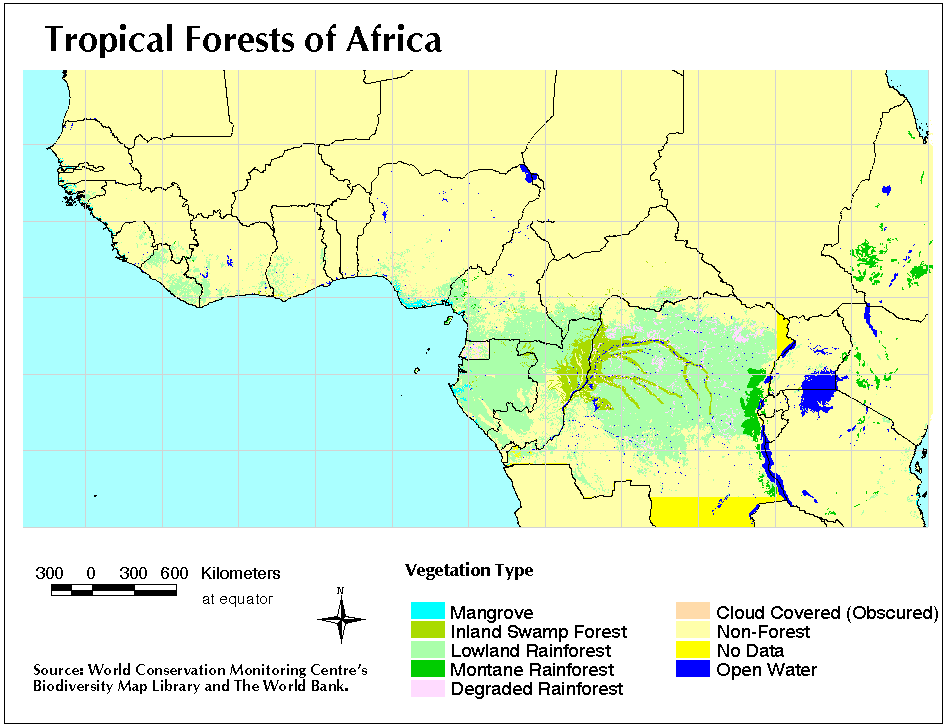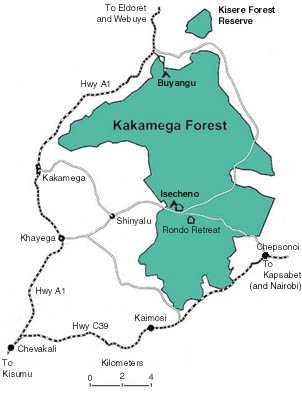The
Kakamega Forest lies 150 km
west of the Rift Valley in Kenya at an
altitude of 1600 m. It is the easternmost extension of the great
Congo
Basin forests which once stretched across the middle of Africa, but
which
have been fragmented in the last century by human activity. The
forest
officially covers an area of 178 square kilometers. Within its
boundaries
there is a considerable variety of habitats, including almost
‘pristine’
rainforest, swamp and riverine forest, colonizing forest, disturbed
forest,
forestry plantations, natural glades, and recent clearings made for
pit-sawing
and charcoal burning. Closed canopy indigenous forest covers
about
 25% of
the officially gazetted area. The forest is a high biodiversity
area, including over 300 species of birds, and over 350 species of
plants.
About 10 to 20 percent of the animal species in the forest are not
found
elsewhere in Kenya. Primates in the forest include blue monkeys (Cercopithecus
mitis), redtailed monkeys (C. ascanius), de Brazza’s monkeys
(C. neglectus), black and white colobus monkeys (Colobus
guereza),
olive baboons (Papio hamadryas anubis), and pottos (Periodicticus
potto). Now and then we see a vervet (Cercopithecus
aethiops).
25% of
the officially gazetted area. The forest is a high biodiversity
area, including over 300 species of birds, and over 350 species of
plants.
About 10 to 20 percent of the animal species in the forest are not
found
elsewhere in Kenya. Primates in the forest include blue monkeys (Cercopithecus
mitis), redtailed monkeys (C. ascanius), de Brazza’s monkeys
(C. neglectus), black and white colobus monkeys (Colobus
guereza),
olive baboons (Papio hamadryas anubis), and pottos (Periodicticus
potto). Now and then we see a vervet (Cercopithecus
aethiops).
The
Kakamega Forest is an island
of relatively ‘natural’ habitat in a
sea of human-dominated landscape. Over 200,000 people, mainly
farmers
on small family farms, live on its edges. High rainfall supports
intensive agriculture, just as it supports the forest habitat.
The forest has been a resource for local people for generations, as a
source of fuelwood, building poles, household items (like vines-ropes)
and food (honey, bushmeat).
Many of these traditional uses are now outlawed, but they continue, at
least partly because people have no easy alternatives, because law
enforcement
is haphazard and incomplete, and because many people do not understand
how
their actions and choices can influence the future of their community
and
families.
Link to a detailed map
of Kakamega Forest from the International Center of Insect Physiology
and
Ecology (ICIPE) website.
Top
 25% of
the officially gazetted area. The forest is a high biodiversity
area, including over 300 species of birds, and over 350 species of
plants.
About 10 to 20 percent of the animal species in the forest are not
found
elsewhere in Kenya. Primates in the forest include blue monkeys (Cercopithecus
mitis), redtailed monkeys (C. ascanius), de Brazza’s monkeys
(C. neglectus), black and white colobus monkeys (Colobus
guereza),
olive baboons (Papio hamadryas anubis), and pottos (Periodicticus
potto). Now and then we see a vervet (Cercopithecus
aethiops).
25% of
the officially gazetted area. The forest is a high biodiversity
area, including over 300 species of birds, and over 350 species of
plants.
About 10 to 20 percent of the animal species in the forest are not
found
elsewhere in Kenya. Primates in the forest include blue monkeys (Cercopithecus
mitis), redtailed monkeys (C. ascanius), de Brazza’s monkeys
(C. neglectus), black and white colobus monkeys (Colobus
guereza),
olive baboons (Papio hamadryas anubis), and pottos (Periodicticus
potto). Now and then we see a vervet (Cercopithecus
aethiops).

